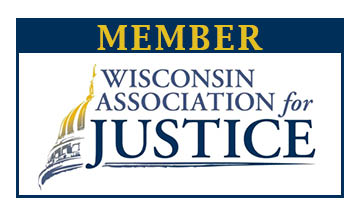
INFORMATION ON DEFECTIVE PRODUCT CLAIMS
Products liability is an area of personal injury law that deals with harm caused by dangerous and/or defective products. Our firm represents injured people who have claims against corporations and/or manufacturers that have sold or manufactured unsafe products. There are several different types of product liability claims: A design defect arises out of the faulty design of a product which makes the product dangerous. Claims can ALSO be based upon the failure to properly warn consumers of dangers associated with the use or misuse of the product. Warning labels should be placed on the packaging informing potential users of the product of safety hazards that may result in physical injuries when using the product in question. Manufacturing defects are defects that occur during the manufacturing process which make the product dangerous. For example, a defective weld which weakens the structural integrity of a product is a manufacturer defect.
Product liability claims can be based upon legal theories of strict liability, negligence, and/or breach of warranty. The concept of strict liability may be misleading. Strict liability does not make the manufacturer or seller an insurer nor does it impose absolute liability. Rather, it relieves the injured user from proving specific acts of negligence and protects him or her from the contractual defenses of notice of breach, disclaimer, and lack of privity. The following elements must be proved to permit recovery under the Doctrine of Strict Liability in Tort:
- That the product was in a defective condition or unreasonably dangerous.
- That the product was defective when it left the possession or control of the seller.
- That the defect was a cause (substantial factor) of the plaintiff’s injury.
- That the seller was engaged in the business of selling such products (it does not apply to an isolated or infrequent sale).
- That the product was one which the seller expected to and did reach the consumer without substantial change.
A product liability claim can arise out of common law negligence. The duty of a manufacturer or supplier of a product is to exercise ordinary care to ensure that the product will not create an unreasonable risk of injury or damage to the user or owner when used in its intended or foreseeable manner. This duty must be approached from the standpoint of the standard of care to be exercised by the reasonably prudent person in the shoes of the defendant manufacturer or supplier. The manufacturer, among other requirements, is required to exercise ordinary care in the manufacture of its product in the following respects:
- Safe design of the product so it will be fit for its intended or foreseeable purpose.
- Construction of the product so the materials and workmanship furnished will render the product safe for its intended or foreseeable use.
- Adequate inspections and tests to determine the extent of defects both as to materials and workmanship.
- Adequate warnings of danger in the use of the product and adequate instructions as to the proper use of the product which is dangerous when used as intended.
A warning or instruction, when required, must be reasonably calculated to reach and be understood by those likely to use the product. The warning must be sufficient to inform the average user of the danger and extent of the danger which he or she may encounter in the use of the product.
A cause of action for breach of warranty ordinarily depends upon a contractual relationship between the parties. Generally, there must be a contractual agreement between the injured party and the wrongdoer to support a claim for breach of warranty. The requirement as to privity of contract does not apply to members of the buyer’s family and guests in the buyer’s home, both of whom may take advantage of any warranty existing between the buyer and the seller if it is reasonable to expect that such person may use, consume, or be affected by the goods, and that person is injured by breach of the warranty, express or implied. The most significant implied warranties relate to merchantability and fitness for an intended purpose. A seller may disclaim a warranty either orally or in writing. Disclaimers must be conspicuous so as to charge the buyer with knowledge of them. Disclaimers which are contrary to public policy or contrary to statute are void.
Products liability claims can arise out of the use of a wide variety of consumer goods including but not limited to the following:
- Motor vehicles including cars, trucks, motorcycles, boats, all terrain vehicles, etc.
- Automobile accessories including airbags, seatbelts, child car seats, tires, etc.
- Sporting equipment and toys.
- Clothing
- Household appliances, cleaning products, and outdoor equipment like lawnmowers and hedge trimmers.
- Pesticides, herbicides, mold, asbestos, and other chemicals.
- Food, beverages, and other products intended for human consumption.
- Medical equipment and devices.
- Prescription and nonprescription medicine.
- Hand tools and other machinery.
- Safety equipment such as smoke detectors and fire alarms.
If you have been injured by a defective product, you require the assistance of an experienced trial lawyer. Product liability cases are usually difficult and expensive to prosecute. Consumers with this type of claim require the assistance of a knowledgeable and experienced product liability attorney like Gregory J. Egan to make sure that their rights are properly protected. If you or a member of your family have been injured by a defective product, you may be entitled to compensation and an award of damages. Contact us for a free consultation regarding your claim. Call for justice.
What to do if you are injured by a defective product:
- Seek appropriate medical care.
- Request that the product be preserved. It is difficult for an injured party to pursue a products liability case unless the product and the product defect can be identified. This is particularly important with generic products that are manufactured and sold by multiple parties. Lack of evidence of the specific identity of the product can be fatal to product liability claims. Product identification is usually an issue in this type of case.
- If the product in question was used in conjunction with another device or product, the second device should be preserved as well. For example, if a shotgun explodes when it is fired by the user, both the gun and the bullets should be preserved by or on behalf of the injured party.
- When products are extensively damaged, it is not unusual for them to be disposed of by persons who do not realize that this evidence may be critical to successful pursuit of a products liability claim. Do not allow this to happen to you.
- Contact an experienced attorney like Gregory J. Egan who handles products liability cases as soon as possible so that the proper steps can be taken to preserve the evidence, the appropriate investigation can be completed as soon as possible, and your legal rights can be protected and preserved.
Call for justice



